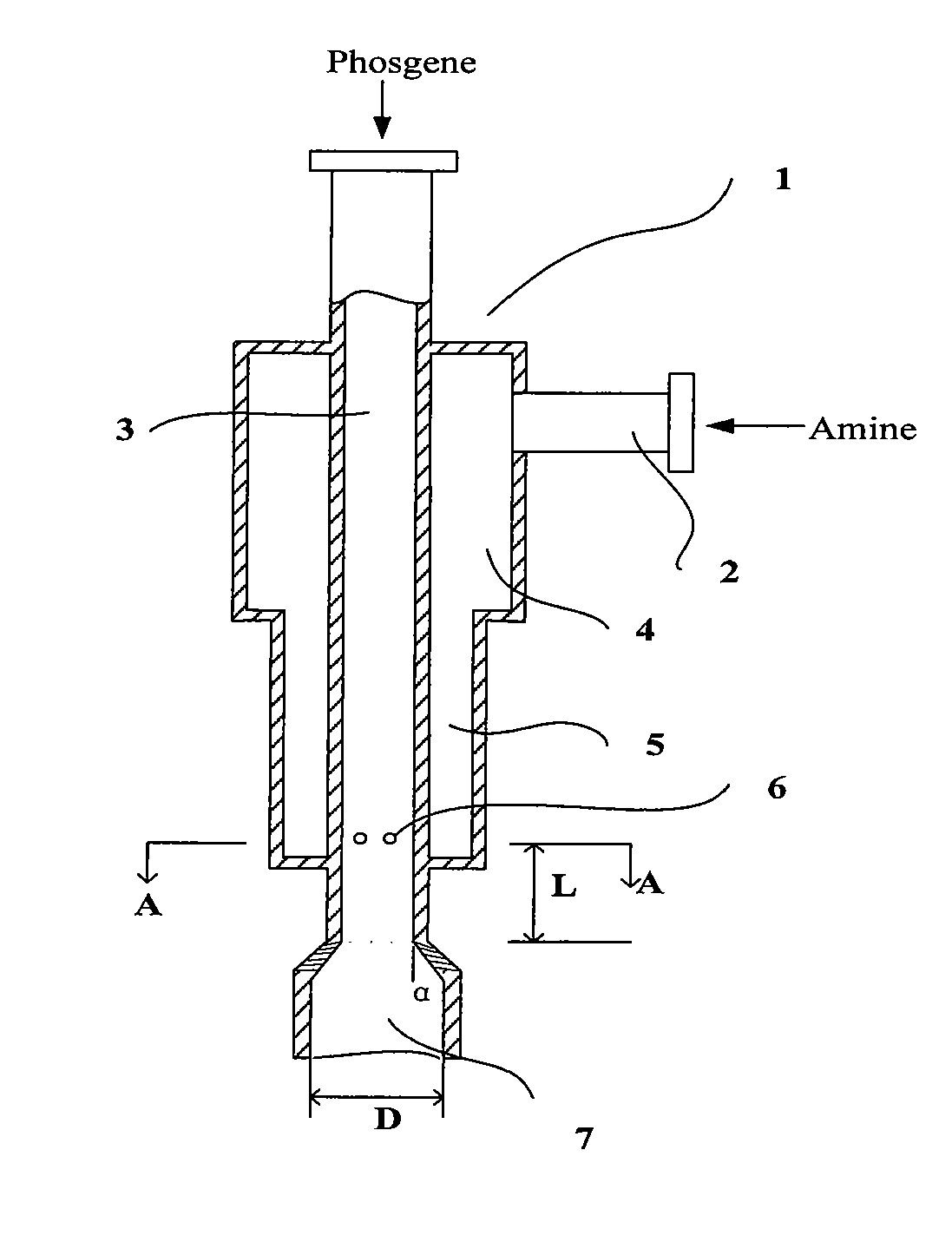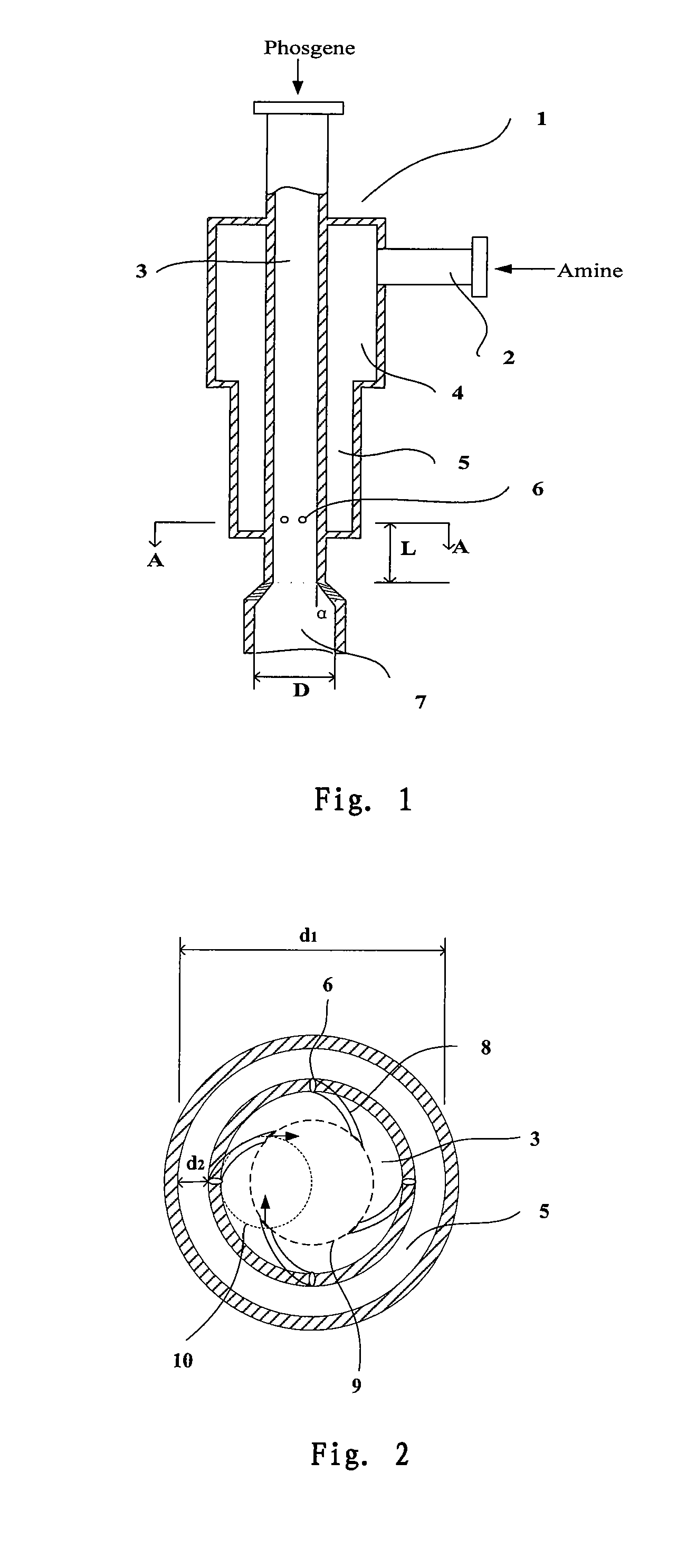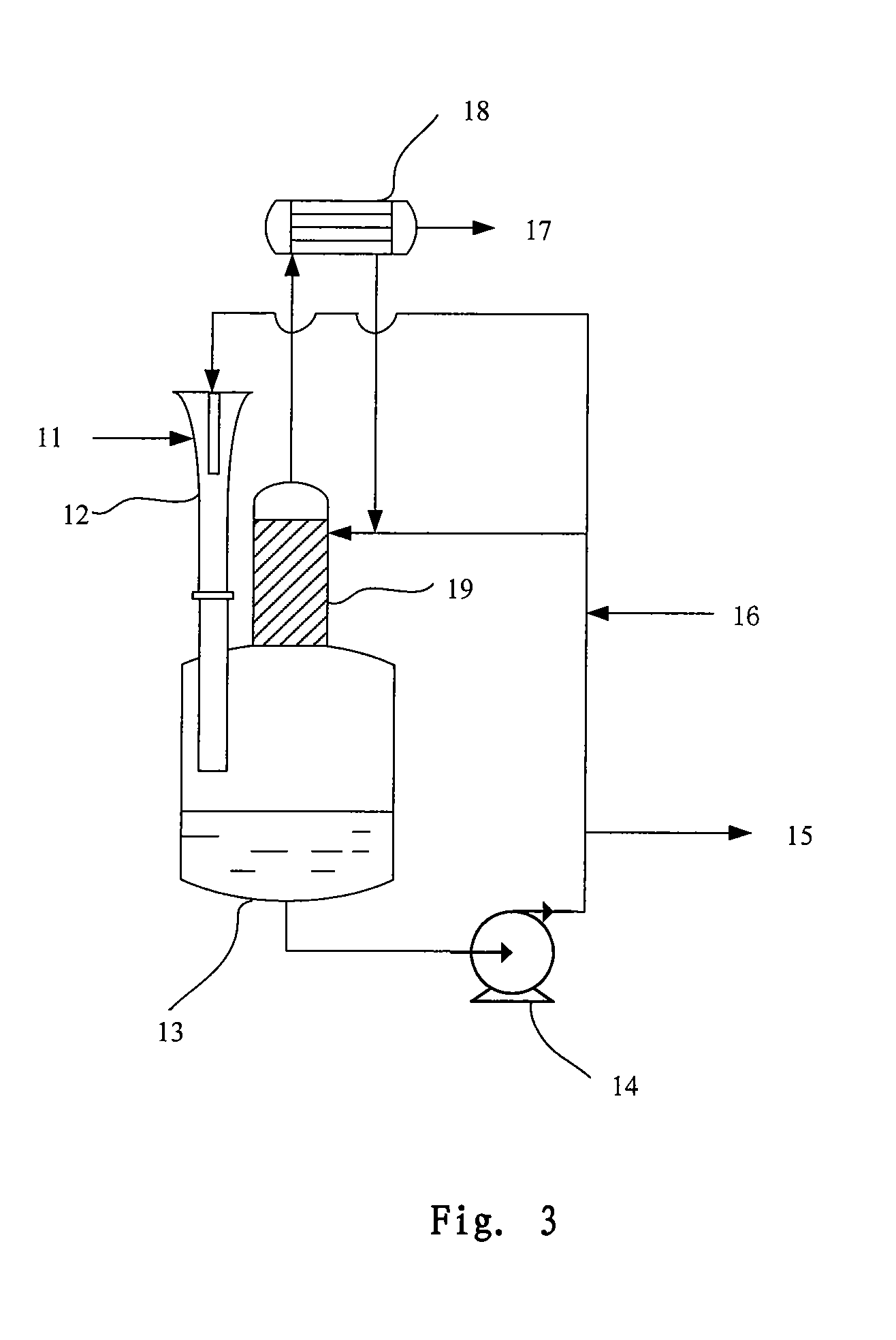Jet reactor with flow ducts and process for preparing isocyanates using it
a technology of flow ducts and jet reactors, which is applied in the field of jet reactors, can solve the problems of obstructing the gas flow channel, reducing the efficiency of the reaction system, and requiring a large amount of solvents, so as to reduce the effect of negative pressure on the reaction system and reduce the production of by-products
- Summary
- Abstract
- Description
- Claims
- Application Information
AI Technical Summary
Benefits of technology
Problems solved by technology
Method used
Image
Examples
example 1
[0048]4,4′-diaminodicyclohexylmethane (HMDA), phosgene and nitrogen, in a mole ratio of 1:4:1, continuously flow to their corresponding feed tubes respectively. The downstream part of the reactor is connected with a gas jet absorption apparatus (for quenching) and an absorption tower for excess phosgene and hydrochloride. HMDA, phosgene and nitrogen are preheated to 360° C. prior to entering the reactor shown in FIG. 1. The HMDA vapor is diluted with an equivalent amount of nitrogen by the mole of the HMDA to form a mixture, and then the mixture flows into flow ducts via six lateral holes in the internal feed tube; the inner diameters of lateral holes and flow ducts are 1.5 mm, the inner diameter of the internal feed tube is 12 mm, the inner diameter of the external feed tube is 30 mm, the inner diameter of the annular space 5 is 20 mm, the distance between lateral holes and the bottom of the annular space is 1 cm, the distance L from lateral holes to the starting point of the diver...
example 2
[0052]4,4′-diaminodicyclohexylmethane (HMDA), phosgene and nitrogen, in a mole ratio of 1:4:1, continuously flow to their corresponding feed tubes of the reactor shown in FIG. 1 respectively. HMDA, phosgene and nitrogen are preheated to 360° C. prior to entering the reactor shown in FIG. 1. A reactor similar to one in Example 1 is used, the HMDA vapor and nitrogen flows into flow ducts via four lateral holes in the internal feed tube; inner diameters of lateral holes and flow ducts are 2.0 mm, the inner diameter of the internal feed tube is 12 mm, the diameter of a first suppositional circle is 0.7 times of that of the internal feed tube and the rest parameters are the same as those in Example 1. The vacuum in the reaction tube is −400 mbar, the velocity of the mixture of the amine vapor and nitrogen through flow ducts is about 34 m / s, and the velocity of phosgene prior to the mixing is about 8 m / s. After emerging from the reaction tube of the reactor, the reaction product HMDI is q...
example 3
[0053]Isophoronediamine (IPDA), phosgene and nitrogen, in a mole ratio of 1:4:1, continuously flow to the same reactor as one in Example 1. Prior to entering the reactor, IPDA, phosgene and nitrogen are separately preheated to 320° C. Under nearly the same reaction conditions, the yield of obtained IPDI is 98.8% of the theory.
PUM
| Property | Measurement | Unit |
|---|---|---|
| Temperature | aaaaa | aaaaa |
| Length | aaaaa | aaaaa |
| Fraction | aaaaa | aaaaa |
Abstract
Description
Claims
Application Information
 Login to View More
Login to View More - R&D
- Intellectual Property
- Life Sciences
- Materials
- Tech Scout
- Unparalleled Data Quality
- Higher Quality Content
- 60% Fewer Hallucinations
Browse by: Latest US Patents, China's latest patents, Technical Efficacy Thesaurus, Application Domain, Technology Topic, Popular Technical Reports.
© 2025 PatSnap. All rights reserved.Legal|Privacy policy|Modern Slavery Act Transparency Statement|Sitemap|About US| Contact US: help@patsnap.com



